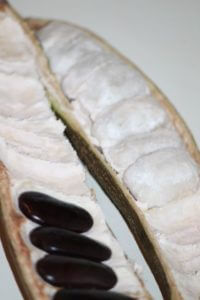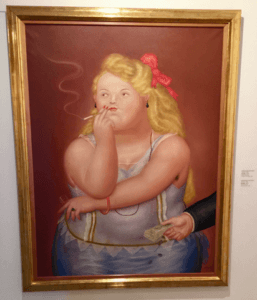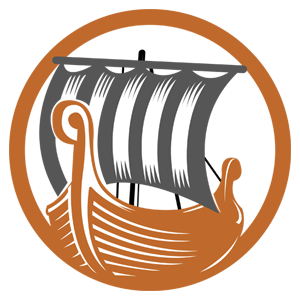Santiago, our lanky, friendly Medellin enthusiast and guide, met us at the Medellin airport. Located in the Andes and built in a valley with steep hillside slums, the name Medellin comes with preset expectations made famous by the infamous drug lord Pablo Escobar (my son even had a pet scorpion named after him). Medellin (pronounced May day jean by the locals) was long known as the murder capital of the world. However, there is a new spirit of hope in this city.
Art Hotel Boutique
Santiago drove us to Art Hotel Boutique. I envisioned a hotel with Van Gogh sunflower walls and impressionistic splashes of color based on the hotel’s name. The hotel’s idea of “Art” was a bit more modern, specifically industrial chic—a contemporary gray look with mostly brick, mortar, cement, concrete floors and bars (not the drinking kind) –think prison. Not our style. That night we ventured out and made it about one block when the skies unleashed torrents, buckets, wheelbarrows of rain, punctuated by thunder and lightning. Our umbrellas were crushed under the weight of the water as we splashed our way home.
Districto Trece: District 13
The next morning, luckily sunny, Santiago picked us up, and our first stop was Districto Trece (District 13) which is positioned at an almost vertical incline on the side of a mountain. Once the city’s bloodiest epicenter, an innovative mayor, Sergio Farjardo connected District 13’s rival gang neighborhoods with escalators–over 28 stories of them. He poured money into education, arts, and libraries. We saw colorful murals of hope lining the walls and classes of youngsters taking martial arts. I like Raphael’s description, “Seeing District 13 where Pablo Escobar was killed, where there had been so many deaths was particularly moving. The community has been working to increase communications between the old factions in the neighborhoods by building walking bridges and an escalator system, allowing easier access to the city for the poorest of the poor.”

District 13
Santa Domingo Cable Cars
Another hillside neighborhood where no one dared enter, not even the police, Santa Domingo, is now connected with cable cars. Santiago informally interviewed our fellow cable car riders asking them about the changes. One, a young woman, almost giddy with joy, commented on the transformation as miraculous.  The other older woman, more serious, echoed the younger woman’s positive attitude. An older couple got on and talked about how they had never left their Santa Domingo neighborhood until the cable cars. Connecting the barrios has resulted in very much needed human connection.
The other older woman, more serious, echoed the younger woman’s positive attitude. An older couple got on and talked about how they had never left their Santa Domingo neighborhood until the cable cars. Connecting the barrios has resulted in very much needed human connection.

El Centro Downtown
Near downtown, Santiago stopped to buy us a new fruit called guama. It looked like a giant (almost two feet long), elongated, stiff green bean. When opened there are seeds the size of walnuts covered with soft white fluff (the part you are supposed to eat) with a cotton candy flavor. I misunderstood and ate the whole seed. When I saw Raphael discarding his seeds, I asked Santiago about it. When he found out I had eaten the entire seed, he blanched and asked several vendors if I would be safe. They shrugged and said, “The animals eat them.” Good enough for animals, good enough for me.

Botero’s Museum
Santiago left us at the Botero’s Plaza of Sculptures in the center of downtown. Fernando Botero is a famous Colombian artist who I thought was European because I saw so many of his paintings in Italy. His signature style is exaggerated, voluminous, “fat” people which seems like it would get tiresome, but since his paintings are based on interesting aspects of society, it doesn’t. At the same plaza is Museo de Antioquia or as many call it Botero’s Museum. Often provocative, a lot of his paintings revolve around the seedy underbelly of life.
Still living, Botero resides most of the year in Europe but travels to Colombia for one month a year. Born in Medellin, he depicted the drug-fueled violence of his city during Escobar’s reign. One of his most famous paintings is “The Death of Pablo.” It’s somehow fitting that this Medellin artist captures the oversized, larger than life Pablo Escobar seen here dominating this rooftop, his power at last extinguished.

We were eating lunch at the museum’s cafe when Raphael noticed a disturbance outside in the plaza. A female vendor with a stick was chasing a man, perhaps a thief. Crowds were gathering and within five minutes several policemen had arrived. Within two minutes the police had peacefully resolved the conflict without escalating the danger. Raphael went outside to praise their handling of what could have been a small riot. The policeman replied, “We are trained to first place ourselves in the shoes of the people.” An interesting concept.
Medellin Countryside


Santiago picked us up the next morning for a drive to the countryside. Our first stop was Piedra de Guatape or Rock of Guatape. Almost ludicrous, a gigantic rock sticks out like the proverbial sore thumb. Zigzagging up, the 700 plus steps lead to the top where there is a small restaurant and folk art store.
We saw one man whose job was to lug plastic water bottles and other supplies up to the restaurant which he said he did 20 times a day. Raphael opted to watch Santiago and me climb to the top. Gasping at the altitude and the views of green turquoise rivers and waterways below, I loved this Doctor Seuss monstrosity of a rock.

I was able to more fully appreciate the aqua green waters when we went for a boat ride through the curlicued waterways with summer estates lining the shores, including a burned-out shell of a mansion that once belonged to Pablo Escobar complete with a tunnel that popped out a few acres away for getaways. Such a peaceful setting with such a disturbing history. From there, a quick exploration of Guatape, this alarmingly colorful town with crafty artistic side panels called zocalos lining the buildings, didn’t disappoint.
Back to the Art Hotel and our last evening in Medellin. On our way out, we stopped at the lookout and saw this glorious view.

Medellin Viewpoint
Leaving Medellin, I reflected on the sheer exuberance of the new-found optimism of the people of this city. It’s as if the mayor had run on a platform of “Make Medellin great again.” and really created dynamic changes for all. Imagine.
Click her for Cartagena and the Caribbean Coast


Loved reading this! What an interesting, colorful and amazing place. I want to trudge up those 700 zig-zag stairs with you, Penny!
Your photography is just stunning, Raphael!
Best boot camp ever! The views are spectacular!